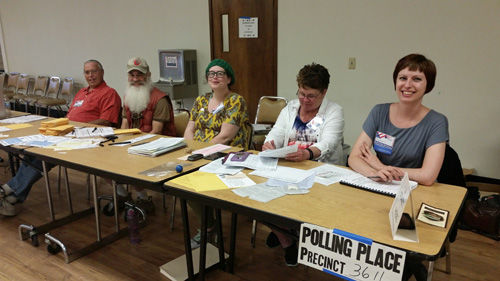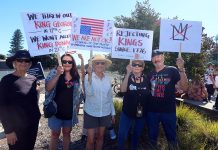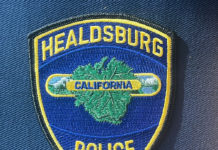
Elections are a busy time of year. Citizens work around their busy schedules to come in and vote or send out their vote by mail ballots, arguments break out between voters on various issues, and people have to educate themselves on different candidates and measures with a mix of advertisements in the mail, political platform websites and televised debates.
However, there’s one aspect of elections that people don’t often think about: working at a polling place. Though it may sound daunting, getting started is easier than it sounds.
In my own experience, I started working at elections at the age of 16, which is the youngest possible age to begin. However, since my whole family would take part in the occasion and work together, I’ve been hanging around polling places since the age of four.
After the switch to vote by mail ballots, many voters don’t come in person any more, and I’ve witnessed many slow election days over the years.
But after the 2008 presidential election and the most recent primary election on June 7, it is clear that voter engagement has risen once again; it’s more important than ever to find people who can help move the democratic process along.
“I believe this is one of the best ways citizens can learn about elections and see our electoral process in action; this process belongs to all of us,” chief deputy Registrar of Voters Elizabeth Acosta wrote in an email.
“This is the foundation of our system of government. By participating in ways beyond voting, citizens can also ensure the integrity and security in elections. We rely on poll workers to implement the laws and procedures that keep elections open, fair and secure.”
Sonoma County’s Registrar of Voters, located at 435 Fiscal Drive in Santa Rosa, is the place to go to both sign up as a voter and to work as a poll worker. Online, you can visit vote.sonoma-county.org.
As a worker, the requirements are relatively simple. You must be a registered Sonoma County voter or a permanent legal resident of the United States, at least 16 years old, able to follow verbal and written instruction and able to complete tasks as described. Spanish-speakers are always in demand to help assist voters whose first language may not be English.
The entire election day requires workers from 6 a.m. to approximately 10 p.m. However, if you cannot work an entire day, you can arrange to work a “split shift” for half pay if someone else is willing to work the other half of the shift.
“Many first-time volunteers often tell us after working their first election ‘I had no idea.’ when learning all the rules and laws to follow to make sure every eligible vote is counted, and that those votes are kept secret and secure,” Acosta wrote. “We need people who value this process, and want to protect it, to help us keep it working properly.”
Depending on experience level, you can work either as a precinct officer or a precinct clerk.
The clerk is the entry-level position, and reports to the inspector. Duties include setting up and cleaning up the polling place, looking up voter names on the roster and obtaining their signature, providing instructions to the voters specific to that election and issuing ballot cards.
Since there are always three people working at a precinct at any given time, it is up to the inspector to assign duties to each worker, meaning that you get to specialize in one area and work becomes quick, like an assembly line. A training class is recommended, but not necessary.
The inspector must attend one training class that lasts about two hours. They pick up the election day supplies in their car, and are responsible for checking all of the materials, contacting the members on their board, assigning tasks to their clerks on election day and transporting supplies to the Return Center at the end of election night.
Both positions do offer a stipend – clerks receive $100, and inspectors receive $135.
If it sounds like a lot of work, it’s mostly learning the laws of the polling place. “We provide a lot of instructional aids in addition to in-person instruction,” Acosta wrote.
“We know it is a lot of information to digest, so we provide examples of how to handle different situations, easy-to-follow instructions and additional field support officers who roam the county on election day to help problem-solve and assist at the polls. We also have a phone bank of six to eight staff (members) to call for help and can talk poll workers through just about any situation.”
The need for poll workers varies by the election, so the Registrar of Voters recruits from a pool of those signed up to work. According to Acosta, June elections are harder to staff due to vacations, students leaving on summer break and lower general interest in primary elections.
“The best recruiting response occurs before a presidential general election, as with the upcoming November 8, 2016, election, because voter interest and turnout is the highest in a four-year cycle,” she wrote. The office will need to recruit as many as 1,000 volunteers for the upcoming date.
“I will say that we hear a consistent message from our poll workers that they volunteer not to get rich, but rather because of the civic duty they feel, and the satisfaction of serving their neighbors and community to ensure their right to vote,” Acosta wrote. “They take a lot of pride in their job, and they are great defenders of the process!”








